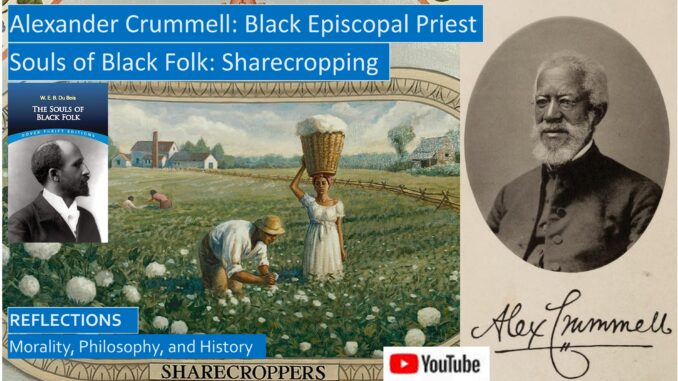
LIFE OF ALEXANDER CRUMMELL, BLACK EPISCOPAL PRIEST
Alexander Crummell was a fellow civil rights leader who impressed WEB Dubois. Along with Frederick Douglass, Crummel was a first-generation black leader before the Civil War. He was born in 1819 in New York City, and like many prominent black leaders, lived a long life, dying at age 79 in 1898. His paternal grandfather was captured and sold into slavery in Sierra Leone, so he felt a real connection to Africa. Both his parents were abolitionists, he was involved in the movement from a very young age. After attending college, he decided to become an Episcopal priest, but he was denied admission to the General Theological Seminary in New York City because of his race. This was a problem faced by Father Augustine Tolton, the first former slave priest in America, he was not admitted to an American Catholic Seminary, he eventually attended a seminary in Rome. Crummell was more fortunate, after attending another seminary in America, he was ordained in Massachusetts.[1]
YouTube video for this blog: https://youtu.be/J3TnQyig6Nk
YouTube script with book links: https://www.slideshare.net/BruceStrom1/web-dubois-souls-of-black-folk-essays-on-alexander-crummel-black-episcopal-priest-sharecropping
How does WEB Dubois start his essay on the life of Alexander Crummell? By how he confronted the temptations and doubts that faced all talented black men in a time when whites could not comprehend that a black man could actually be a true intellectual, that he could think independently of his white overlords. WEB starts his essay, “This is the history of a human heart, the tale of a black boy who” “struggled with life that he might know the world and know himself,” fulfilling the instructions written on the Temple of Delphi so many millennia ago. “Three temptations he met on those dark dunes that lay gray and dismal before the wonder-eyes of the child:
- The temptation of Hate, that stood out against the dawn;
- The temptation of Despair, that darkened noonday; and
- The temptation of Doubt, that ever steals away with twilight.
Above all, you must hear of the vales he crossed:
- The Vale of Humiliation.
- The Vale of the Shadow of Death.”
WEB Dubois tells us his first impressions of Crummell, he was “tall, frail, and black, standing with a simple dignity and an unmistakable air of good breeding.” “I felt the fineness of his character, his calm courtesy, the sweetness of his strength, and his fair blending of the hope and truth of life.”
Crummell attended the Oneida Institute in New York, a hotbed of abolitionism. Many of his white classmates were surprised at the intelligence of their black classmate. WEB Dubois ascribes this deep emotion to Crummell: “there came a new dawn of sympathy and inspiration to the lonely boy. The shadowy, formless thing, the temptation of Hate, that hovered between him and the world, grew fainter and less sinister. It did not wholly fade away but diffused itself and lingered thick at the edges.”
WEB Dubois continues, “A voice and vision called him to be a priest, a seer to lead the uncalled out of the house of bondage.” WEB Dubois ascribes to Crummell another feeling he no doubt felt himself, “He saw the headless host turn toward him like the whirling of mad waters, he stretched forth his hands eagerly, and then, even as he stretched them, suddenly there swept across the vision the temptation of Despair.”
What did Alexander Crummel see as his mission as an Episcopalian priest? WEB Dubois tells us, “Deep down below the slavery and servitude of the Negro people he saw their fatal weaknesses, which long years of mistreatment had emphasized. The dearth of strong moral character, of unbending righteousness, he felt, was their great shortcoming, and here he would begin.”
Crummell was assigned a small black parish in Providence, Rhode Island, where attendance was slim, and he just could not bring life into this community. He decided that he needed to transfer to a larger parish where there were more freed blacks that he could bring into his church. His bishop agreed to bless his move and wrote a letter of introduction he could present to Bishop Onderdonk of Philadelphia. After pondering his request, the bishop “slowly and impressively said, ‘I will receive you into this diocese on one condition: no Negro priest can sit in my church convention, and no Negro church must ask for representation there.’” Crummell paused for a moment, and then said simply: “I will never enter your diocese on such terms.”
He found a small chapel in New York City, and he “labored in poverty and starvation; scorned by his fellow priests. Half in despair, he wandered across the sea, a beggar with outstretched hands.” Like Frederick Douglass, he found comfort in his trip to England, where he met the famed William Wilberforce and other English abolitionists, raising funds for his parish by delivering speeches to abolitionist gatherings. He decided to stay for four years, earning a degree at Cambridge.
Crummell decided to serve as a missionary to Liberia, which he promoted as a destination for American blacks. Although he influenced Liberian intellectual and religious life, twenty years later he returned to America when he felt his life was in danger due to an insurgency. He was called to pastor a parish in Washington, DC, and he then founded the first independent black Episcopal church in the city, St Luke’s Episcopal Church.
WEB Dubois concludes, “Crummell did his work nobly and well, and yet I sorrow that here he worked alone, with so little human sympathy. His name today means little, few remember or emulate him. Here lies the tragedy of the age: not that all men are poor, as all men know something of poverty; not that all men are wicked, as who is good? Not that all men are ignorant, what is Truth? Nay, but that men know so little of men.”[2]
Crummell faced many of the same frustrations that Father Augustine Tolton faced as the first black Catholic Priest in America. Like Crummell, he was shunned by many fellow priests, and he faced another hurdle, a white priest in a nearby parish forbade his parishioners to financially support his black church, claiming that each parish should raise funds from only their own parishioners, which forced Father Tolton to request a transfer to the Diocese of Chicago.
SHARECROPPING: ON THE QUEST OF THE GOLDEN FLEECE
During the Civil War, the Union generals had seized vast plantations and subdivided them among the freed slaves to work as small homesteads, and some small farms, such as those in the Outer Banks and the North Carolina coast, had been harvesting crops for several years. But after the assassination of Abraham Lincoln, the new President, Andrew Johnson, a Southern sympathizer, soon ordered that all confiscated property be returned to its former owners.
All was not rosy for the landowner, the war meant financial collapse, and the marauding federal, and Confederate troops, had stripped many plantations of their farm animals, seed, provisions, and even furniture. Remember how, in Gone With the Wind, Scarlett O’Hara found that all the fancy furnishings of her Plantation were gone, with only the thick curtains left? That was the reality in much of the South where the fighting took place. Also, England also discovered she could grow cotton in India, she didn’t need Southern cotton. The price of cotton fell, from fourteen cents a pound in 1860 to a mere four cents a pound in 1898.
Now that slavery was abolished, how to pay the freed slaves who worked the land? There was some experimentation with paying them cash wages, but the owners themselves were dead broke, and had no cash to pay wages before the cotton or other crop was harvested. Also, these white landowners wanted a labor system that was as close to the old system of slavery as possible.
The new labor system was sharecropping. WEB Dubois argues that the chief cause of this predatory system of labor was the “carelessness of the nation in letting the slave start with nothing, and the widespread opinion among the merchants and employers of the Black Belt that only by the slavery of debt can the Negro be kept at work.”
Under sharecropping, the fields would be subdivided in plots that individual families would farm. The main advantage to the freed slaves is they would no longer have to work in gangs under the whip of a cruel overseer, they could work as a family at their own pace. Soon after the Civil War, most sharecroppers were black, but over time, more and more poor whites became ensnared in debt accrued under the sharecropping system.
WEB Dubois notes that “the sharecroppers are entirely without capital, even in the limited sense of food or money to keep them from seed to harvest. All they furnish is their labor; the landowner furnishes land, stock, tools, seed, and house; and at the end of the year the laborer gets from a third to a half of the crop. Out of the sharecropper’s share, however, comes pay and interest for food and clothing advanced him during the year. Thus, we have a laborer without capital and without wages, and an employer whose capital is largely his employees’ wages. It is an unsatisfactory arrangement, both for hirer and hired, and is usually in vogue on poor land with hard-pressed owners.”
Since the sharecroppers were illiterate, and could not figure, and since blacks had no recourse to the court system, and since whites basically denied that blacks were their equal in dignity, sharecropping was prone to abuse. Although the sharecropper was more like a serf than a slave, the sharecropper was definitely a wage slave, trapped into a cycle of debt that could never be repaid. After all, in a profitable year, the landowner needed only to manufacture some new expense the sharecropper would need to repay.
Particularly cruel landowners could accuse the sharecropper of fraud, and ask that the sheriff arrest them, forcing them into peonage, which was a true system of slavery, where they would be auctioned off as convict labor.
Sharecroppers nearly always lived on the land they worked, in cabins provided by the landowner. The typical sharecropper one-room cabin in Georgia is slightly better than the slave cabin described by Booker T Washington in this slave autobiography, as now free men do have some furniture, they no longer have to sleep on the floor.
WEB Dubois tells us that the sharecropper one-room cabin “is nearly always old and bare, built of rough boards, and neither plastered nor ceiled. Light and ventilation are supplied by the single door and by the square hole in the wall with its wooden shutter. There is no glass, porch, or ornamentation without. Within is a fireplace, black and smoky, usually unsteady with age. A bed or two, a table, a wooden chest, and a few chairs compose the furniture, while a stray showbill or a newspaper decorates the walls. Some cabins are kept scrupulously neat, with merry steaming fireplace and hospitable door; but the majority are dirty and dilapidated, smelling of eating and sleeping, poorly ventilated, and anything but homes.”[3]
FORMER GLORY, AND POST-WAR DECAY, OF THE BLACK BELT
We remember how, in Gone With the Wind, the movie opens up with the plantation house full of southern beauties swooshing about in their full-hooped, sweeping gowns, how the ravishing Scarlett O’Hara flirted with the dashing Rhett Butler in a sumptuous ball, but how after the war, all the opulence had disappeared, gone with the winds of war. That part of the movie is true, and WEB Dubois describes how the opulence and prosperity of the Antebellum Deep South plantations contrasted with the dilapidated big houses and run-down plantations after the war.
WEB Dubois tells that, before the war, in prosperous west Dougherty, Georgia, “a hundred and fifty barons commanded the labor of nearly six thousand Negroes, held sway over farms with ninety thousand acres of tilled land.” “Twenty thousand bales of ginned cotton went yearly to England, New and Old; and men that arrived bankrupt made money and grew rich. In a single decade, the cotton output increased four-fold and the value of lands tripled. It was the heyday of the nouveau riche, and a life of careless extravagance reigned among the masters,” just like in the ballroom scene in Gone With the Wind. “Four and six bob-tailed thoroughbreds rolled their coaches to town; open hospitality and gay entertainment was the rule. Parks and groves were laid out, rich with flower and vine, and in the midst stood the low wide-halled ‘big house,’ with its porch and columns and great fireplaces.”
Booker T Washington reflected that both masters and slaves faced hard times during the war and the wartime shortages, although the masters suffered more, for slaves were accustomed to not having enough to eat. Booker observes that slavery really did cripple both master and slave alike. After the war, the master and his family had no marketable skills, since their slaves did everything. The wife did not even how to keep her house without slaves or servants.
The slaves had never worked hard, there was no incentive to work hard, they just did enough to get by and avoid the whip. On many slave plantations everything was half fixed, half working. Nothing was freshly painted, everywhere the paint was peeling.
After the war, as sharecroppers, the former slaves still had no incentive to maintain the fields or their cabins, and only slight incentive to maintain their tools. Now the landowners, since they were often absentee owners, also had less incentive to maintain the property. The social life was gone with the wind, why not let the big house go? Many big houses now had the Spanish-moss musty dark and dank feel, decaying as the decades passed.
WEB Dubois remembers that as he traveled through the hills of West Dougherty, Georgia, “through sand and pines and glimpses of old plantations, how there crept into sight a cluster of buildings, wood and brick, mills and houses, and scattered cabins, quite a village.” As he drew nearer, he saw that “the buildings were rotten, the bricks were falling out, the mills were silent, and the store was closed. Only in the cabins appeared now and then a bit of lazy life.” What had happened? “An old ragged black man, honest, simple, and improvident, told us the story.” An absentee investor from up North bought the plantation, but the agent running the plantation stole all the money, the absentee owner “refused to sell, and let houses and furniture and machinery rust and rot.”[4]
We had previously discussed essays on WEB Dubois’ classic book, Souls of Black Folk, in a previous video/blog. Several of these essays were autobiographical, they give us as window on how black men strived in the often-harsh years of Reconstruction and the Redemption Jim Crow era. We reflected on his first teaching job in a modest one room black schoolhouse that had no real furniture, and how his young son passed away because the hospitals in Atlanta would not admit sick black people due to segregation. We also reflected on his criticisms of the accommodationist black leader Booker T Washington, the state of black education, and spirituality of the Negro when facing the challenges of his existence.
[1] https://en.wikipedia.org/wiki/Alexander_Crummell
[2] WEB Dubois, The Souls of Black Folk (New York: Dover publications, 1903, 1994), pp. 133-140.
[3] WEB Dubois, The Souls of Black Folk, pp. 83-97.
[4] WEB Dubois, The Souls of Black Folk, pp. 75-76.

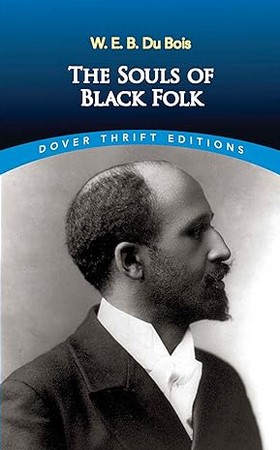
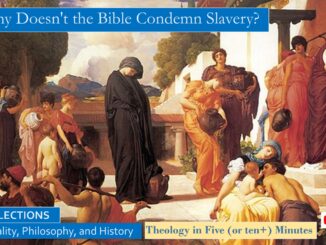
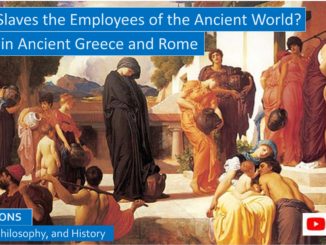
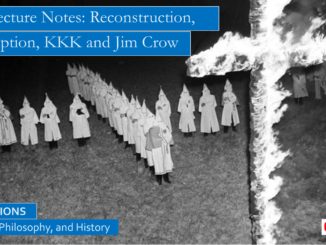
Be the first to comment